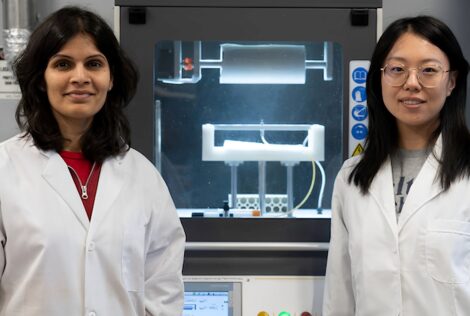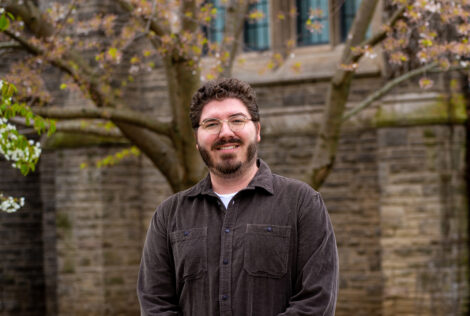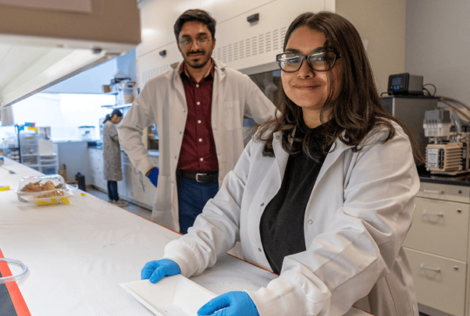
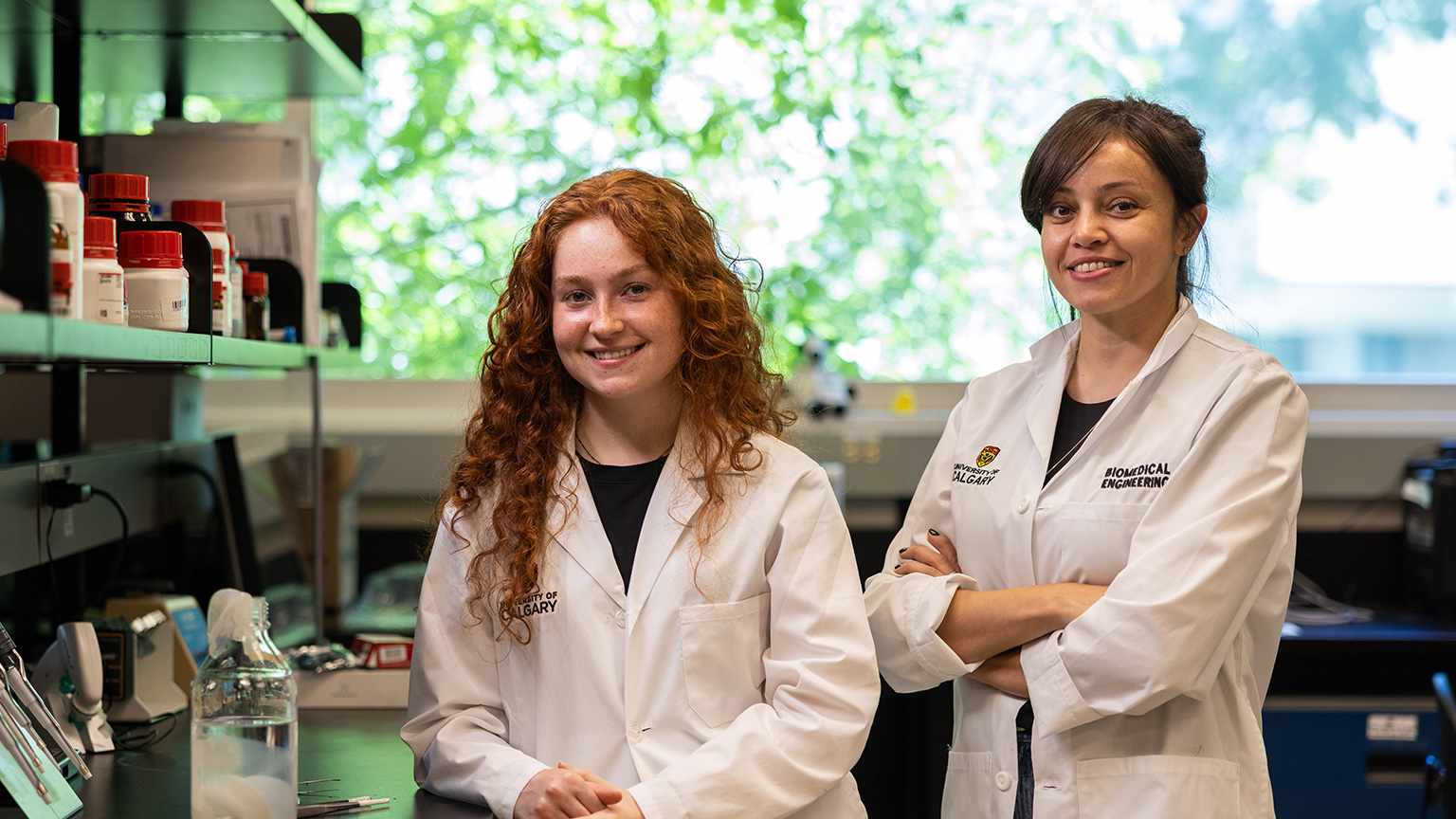
Everything is much more connected than you think.
Maryam Badv saw these words on a sign on James Street in Hamilton during her time as a biomedical engineering graduate student at McMaster University in 2019. The message resonated with her, so much so that it became the heart of her valedictorian address.
We are forever connected by a shared experience at McMaster. We journeyed through together. Connections with people in the Faculty made campus feel like my second home. My experience truly shaped who I am.
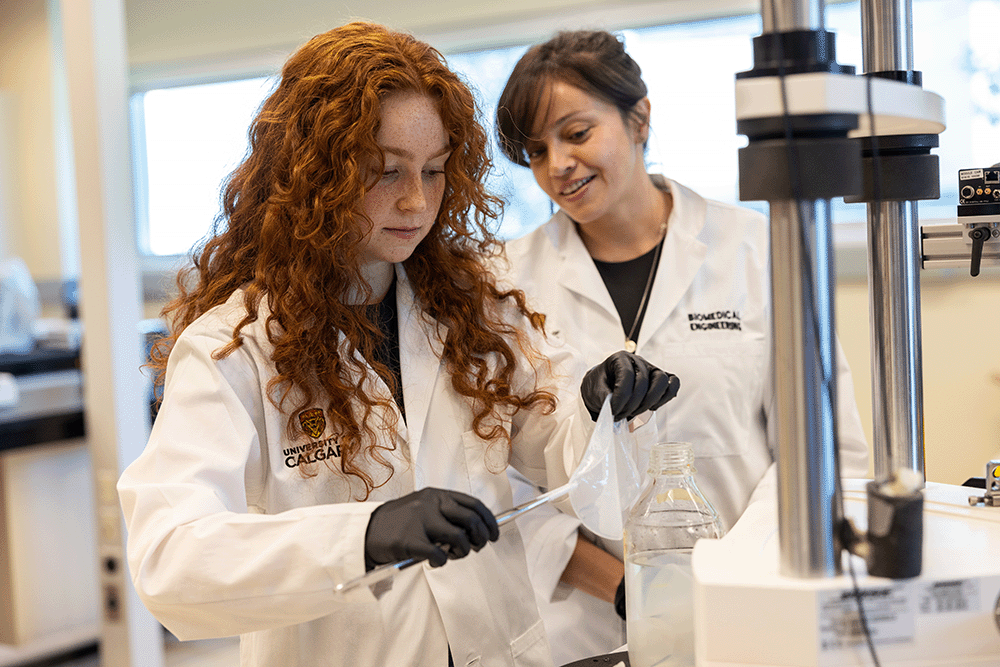
Now an assistant professor at the University of Calgary, she was reminded of the spirit of that message when a current McMaster Integrated Biomedical Engineering and Health Sciences (iBioMed) student reached out to her about a research opportunity.
Shannon Gomes-Hunt was hoping to spend the summer back home in Calgary but didn’t want to miss out on gaining practical experience between her first and second year.
Through a helpful connection from one of her current professors, Dr. Kyla Sask, Gomes-Hunt found herself working in Badv’s Translational Biomedical Engineering Laboratory, learning invaluable academic and life lessons.
Compatibility in the lab
As members of the Fireball Family – McMaster Engineering’s tight-knit community – there was an immediate camaraderie when Badv interviewed Gomes-Hunt for a research position.
Bolstering her suitability for the role was Gomes-Hunt’s keen interest in tissue engineering, which aligned with the work underway in the “Badv Lab.” She joined a team of researchers studying different types of biomaterials, surfaces, biointerfaces, polymers and hydrogels. Their focus is to understand the connection between a synthetic and a biological material to ultimately improve compatibility.
In practical terms, they’re discovering how a medical implement, or another synthetic application, can avoid triggering any immune or physiological response by the body. These findings have been highlighted in several research publications, including most recently, ACS Materials Au.
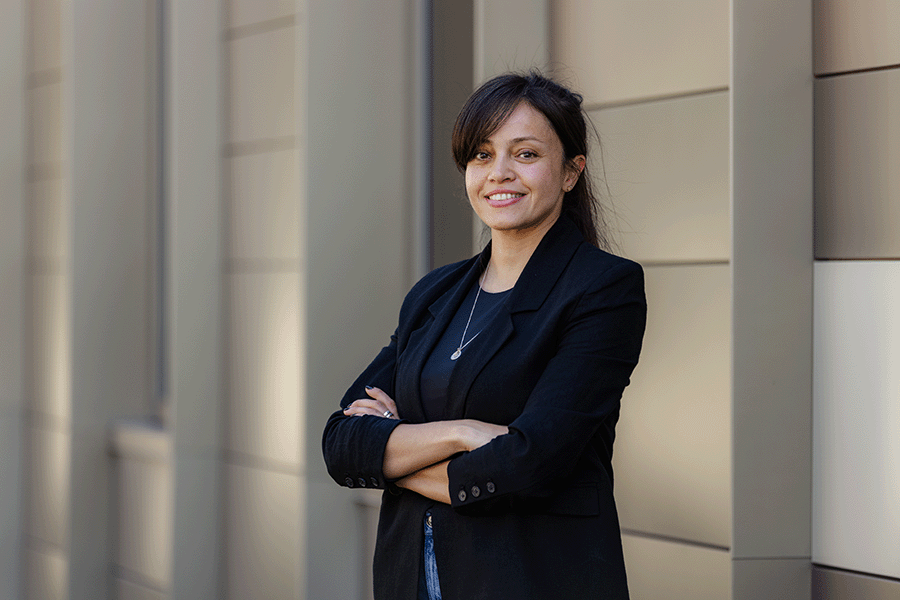
This adds to Badv’s multiple journal and conference publications and patents attained during her McMaster graduate studies. Her PhD research focused on developing biofunctional lubricant-infused surface coatings for medical implants.
Gomes-Hunt spent her summer growing cells along a material called bacterial nanocellulose, something that may be used to test the compatibility with a hydrogel. She credits a first year
Entrepreneurship in Biomedical Innovation from Bench to Market class for preparing her with knowledge of cell tendencies and how they grow, which influenced how she approached her experiments.
Growing cells takes patience. I have a new appreciation for how tedious research can be. It’s not immediately rewarding, but if you put in the time the results will show. It’s a good lesson in all aspects of life.
Leading by example
As significant as the research is led by Badv, she is quick to remind students there’s life outside the lab – wisdom passed on from her McMaster mentors.
Co-curricular experiences shaped me personally and professionally and influenced how I got to where I am today. I was routinely encouraged to step outside my comfort zone, and it’s something I strive to impart on my students.
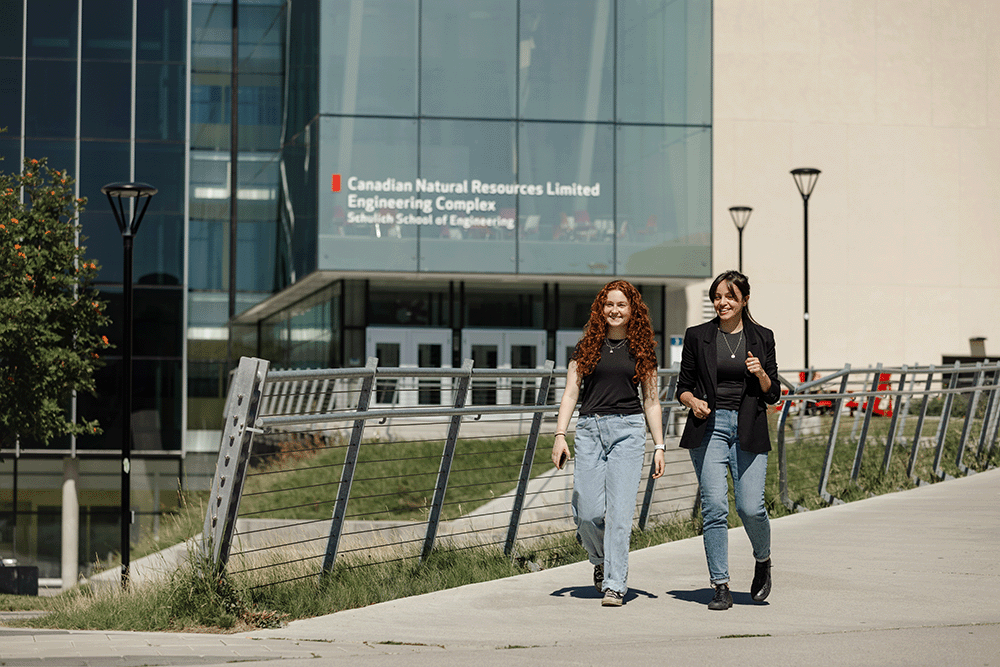
In addition to serving as valedictorian for her class, Badv made her mark as president of McMaster’s Engineering Graduate Society – a student-run organization dedicated to supporting engineering graduate students – and serving on various university-level committees.
Contributions to improving the graduate student experience earned Badv a prestigious Mary Keyes Award for Outstanding Leadership and Service to McMaster University.
Badv also feels strongly about supporting women in engineering. Her lab at UCalgary currently employs all women, which isn’t commonly seen in biomedical engineering research.
Learning of the momentum McMaster Engineering is maintaining toward gender parity in its Bachelor of Engineering program, Badv says she gets goosebumps. “I feel relief and hope,” she says. “As an advocate, that’s what I want to hear and want to see.”
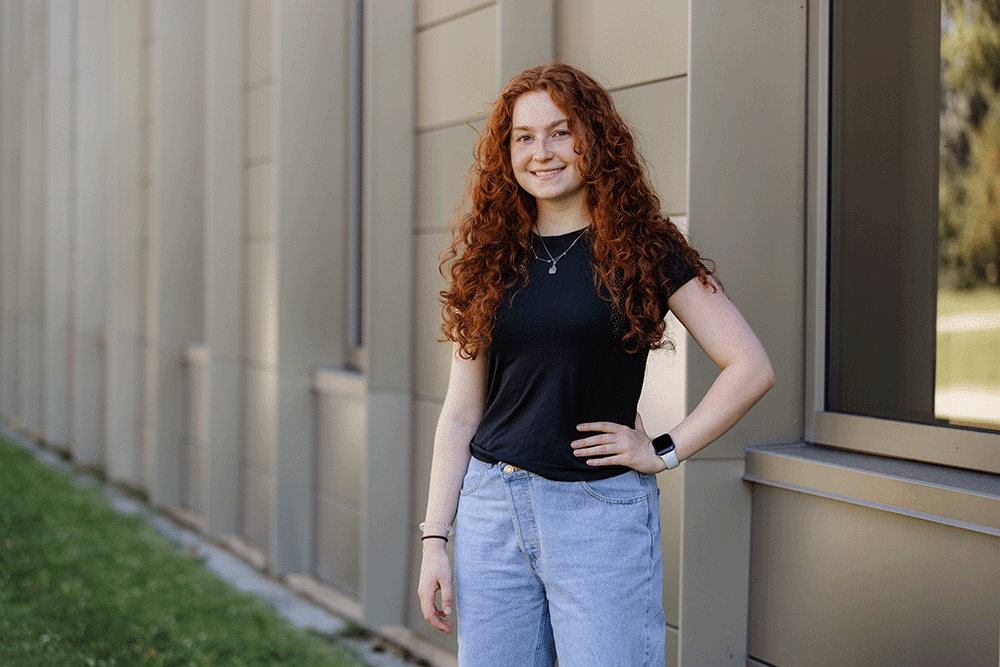
Gomes-Hunt shares this sentiment. “It’s truly something to celebrate,” she remarks. “Seeing how far women in engineering have come in recent decades makes me so proud and inspired. I am honoured to be part of this community of accomplished women, and I hope to further pave the way for future generations of women in engineering.”
Soon returning to Hamilton to start her second year and a specialization in biomedical and software engineering, Gomes-Hunt feels reenergized by her experience in Badv’s lab and time spent in her hometown. “I’ll bring with me a fountain of knowledge,” she says, proudly.
Saying goodbye to family is never easy, but Gomes-Hunt says she feels a similar connection to the Fireball Family as Badv. “iBioMed is competitive in the admission process but that’s where it ends,” she says. “The Faculty has gone a long way to foster a strong culture of support.”

